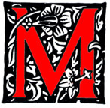Want to know how to navigate the Victorian Web? Click here.

uch of nineteenth-century wisdom was mediated through certain short rhetorical forms. It is difficult to have to acknowledge that such a formless genre as the fragment exists and that it should have been the chosen vehicle for so many perpetrators of what I have been calling the high wisdom. It should come to no one as a surprise that some of the dreariest productions in the late eighteenth- and early nineteenth-century periodical press belong to this peculiar genre. The form is not only by definition open-ended and tentative, it positively invites abuse. . . .
Nevertheless, serious artists continued to write fragments and to interest themselves in the possibilities of the form. Carlyle found a way of converting these devices of melodrama to the purposes of high art in Sartor Resartus, which offers, of course, a vast storehouse of fragments from the workshop of an imaginary professor of things in general. The old device of the interpolated incomplete narrative — familiar to readers of early novels and romances — here responds to a new sort of creative intention; and Carlyle has much to say, some of it seriously intended, some of it whimsical, about the problems of trying to piece together the fragments of insight which are likely to come sporadically to every man. Emerson went further. He suggested that contemporary works of genius were apt to take the form of "those books which collect and embody the wisdom of their times, and so mark the stages of human development. Such are the Proverbs of Solomon, the Essays of Montaigne, and eminently the Essays of Bacon" (Journals — quoted in Matthiesssen's American Renaissance 15).
Here is an extension of the concept of the fragment. Emerson recommends that a book should be made up of short rhetorical forms, each exhibiting a fragment of wisdom, and the whole arranged like a set of reflecting mirrors or prisms, irradiating one another. John Sterling, a young friend of all the men we have mentioned — Emerson, Hare, Maurice, Coleridge, and Carlyle—was obviously intrigued; the result is a volume of loosely connected fragments entitled appropriately, Crystals from a Cavern. From the dark cave of the mind crystalized insights emerge: hopefully there is some unstated ground of unity around which they are placed and upon which they cast their angled lights.
Related Material
Bibliography
Preyer, Robert. “Victorian Wisdom Literature: Fragments and Maxims.” Victorian Studies 6 (1962-63): 245-62.
Last modified 30 June 2014